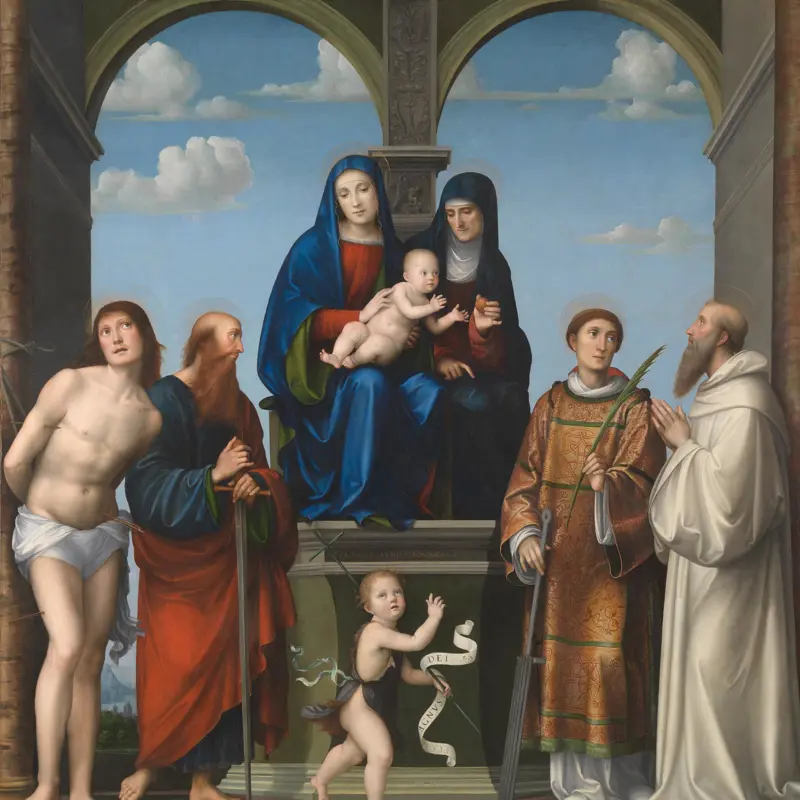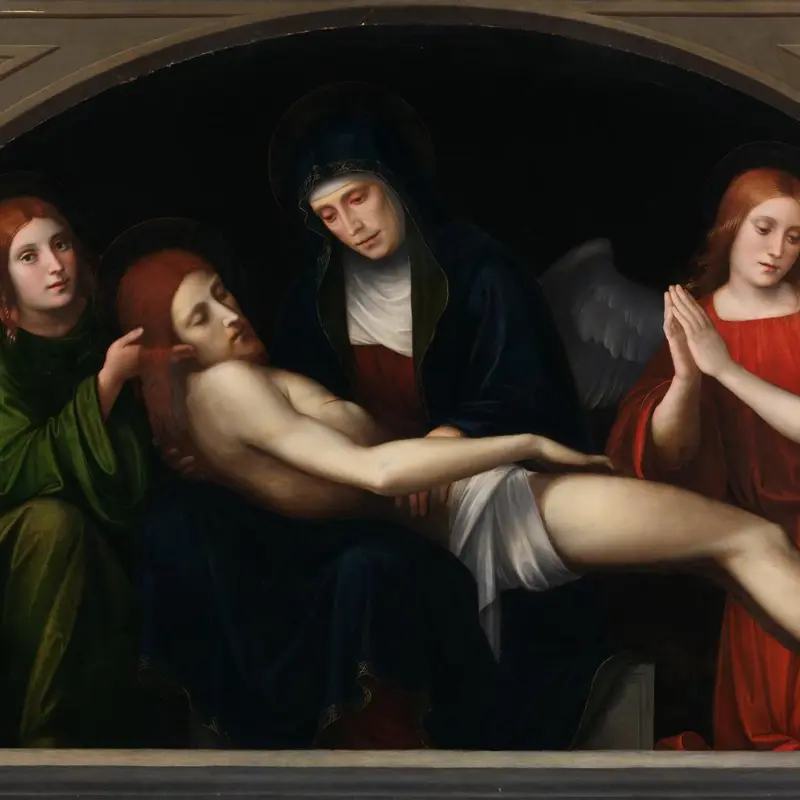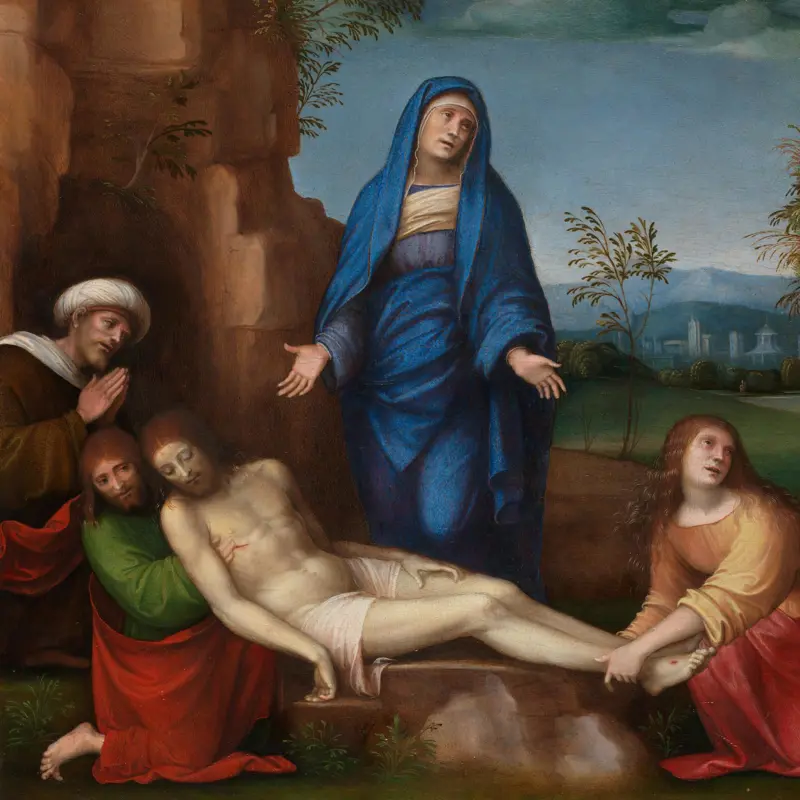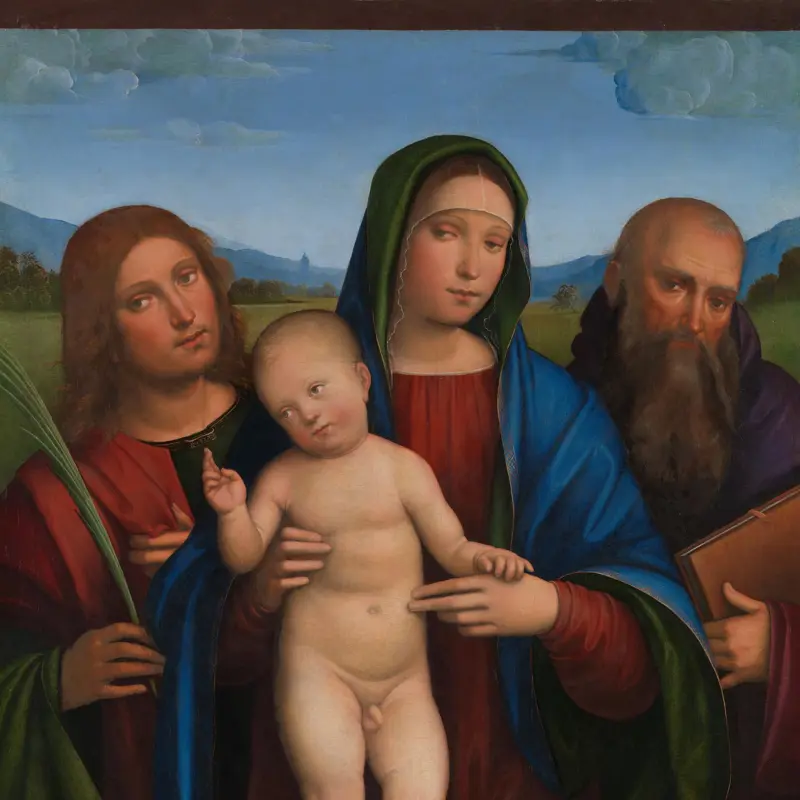Francesco Francia, 'The Buonvisi Altarpiece', 1510-12
About the group
Overview
This altarpiece was painted for the Buonvisi Chapel in the church of S. Frediano in Lucca. It shows the Virgin Mary with her mother, Saint Anne, and the infant Christ enthroned and surrounded by saints, from left to right: Saint Sebastian, Saint Paul, Saint Lawrence and Saint Benedict.
In the main panel, the young Virgin sits holding her baby, thinking about his future sacrifice. The scene carved on the pillar behind her head represents the sacrifice of Isaac (Genesis 22: 2), when God ordered Abraham to sacrifice his son but at the last moment supplied a lamb instead. In Francia’s altarpiece, the infant John the Baptist’s banner reads ‘ECCE AGNUS DEI’ (‘Behold the Lamb of God’). His message is that Christ must be sacrificed but that no lamb will be exchanged in his place.
In the semicircular panel above the main panel, the elderly Virgin grieves over the lifeless body of her son who has been sacrificed for the salvation of mankind.
Key facts
Details
- Full title
- The Buonvisi Altarpiece
- Artist
- Francesco Francia
- Artist dates
- about 1447 - 1517
- Date made
- 1510-12
- Inventory number
- NG179-NG180
- Collection
- Main Collection
About this record
If you know more about this work or have spotted an error, please contact us. Please note that exhibition histories are listed from 2009 onwards. Bibliographies may not be complete; more comprehensive information is available in the National Gallery Library.
Works in the group
-
This altarpiece was commissioned by Benedetto Buonvisi for his family chapel in Lucca. The Virgin Mary and Saint Anne are seated on a throne. The infant Christ leans across his mother’s lap towards his grandmother to reach for the fruit she offers him.The Virgin appears lost in thought, perhaps c...
-
This semicircular painting forms the upper part of the altarpiece painted for the Buonvisi family chapel in the church of S. Frediano in Lucca.The Virgin Mary grieves over the body of her son Christ, laid across her lap, her eyelids red and puffy from weeping. An angel holds Christ’s head; anothe...






